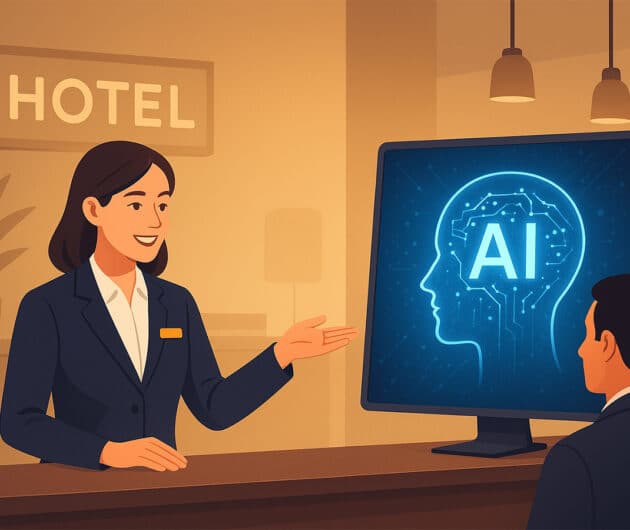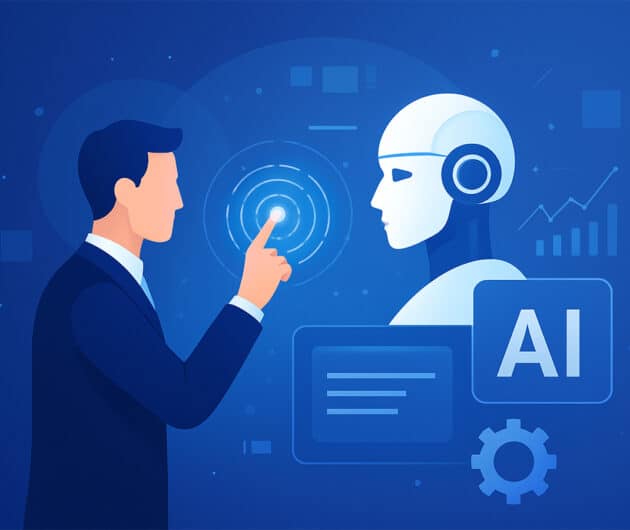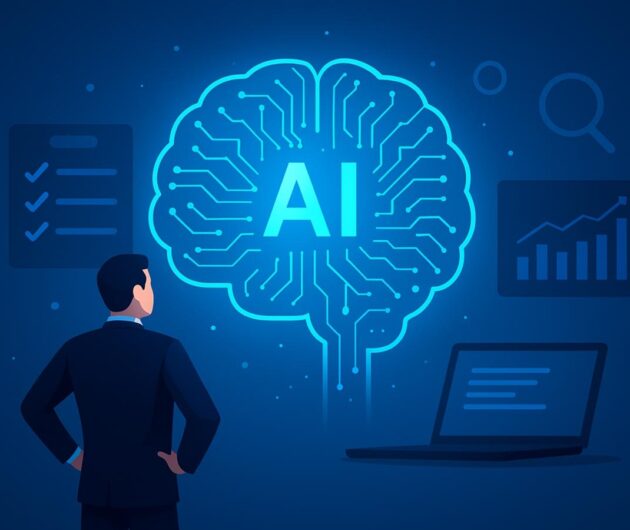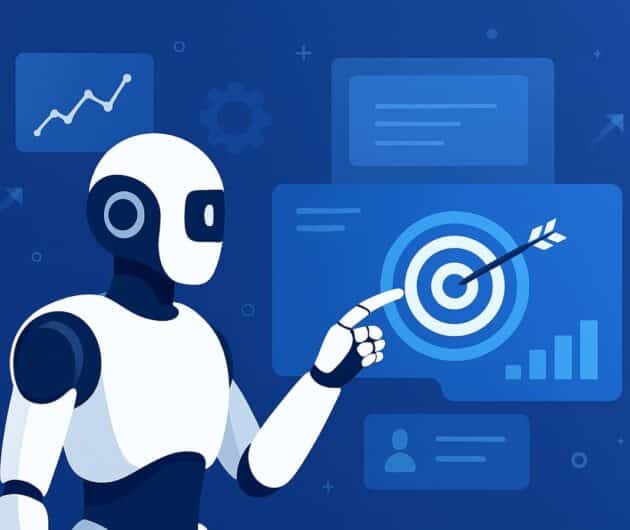How Much Does It Cost to Develop an AI Agent in 2026?

-
Ankit Patel
- November 10, 2025
- 8 min read
2026 isn’t the year businesses are experimenting with AI anymore — it’s the year they’re building with it. Across industries, AI agents have quietly shifted from futuristic concepts to core business enablers — automating customer interactions, managing operations, analyzing data, and even making strategic decisions in real time.
But here’s the question every organization is asking as they explore this new frontier: “How much does it really cost to develop an AI agent in 2026?”
The honest answer is — it depends. Not just on what you’re building, but on how intelligently you approach the build. The difference between a $50,000 AI agent and a $500,000 one often comes down to architecture choices, integration depth, and your long-term vision for scalability.
In 2026, AI agents have evolved beyond chatbots. They can analyze voice, video, documents, and live business data to perform actions — not just conversations. Leading enterprises are already deploying multi-agent ecosystems that collaborate across marketing, finance, and operations, driving what analysts call the next wave of AI-powered digital transformation.
And the stakes are high:
- According to McKinsey, businesses integrating generative and agentic AI are achieving productivity gains of up to 40% in specific workflows.
- Gartner forecasts that by 2028, 33% of digital enterprises will include Agentic AI capabilities.
- Meanwhile, the cost of computing power and model access continues to fall, making custom AI agent development accessible even for mid-sized companies.
Yet, while technology has become cheaper, strategy mistakes have become more expensive. Many organizations underestimate the hidden costs — data preparation, integration, compliance, and ongoing model optimization — only to find their “AI assistant” becoming an unscalable liability.
1. What Is an AI Agent and How Does It Work?
Before we talk about cost, it’s important to understand what an AI agent actually is — and why it’s become such a powerful force in modern business.
At its core, an AI agent is a self-directed software system that can perceive its environment, reason about what it observes, and take action to achieve specific goals — often without human intervention. In simpler terms, it’s a digital entity that doesn’t just react to commands; it understands, decides, and acts.
Unlike traditional automation scripts that follow fixed rules, AI agents use a mix of machine learning, natural language processing, and sometimes generative AI to make decisions dynamically. They can adapt to new inputs, learn from outcomes, and interact intelligently with people, data, and other systems.
• How an AI Agent Works — The Core Architecture
While architectures differ by complexity and use case, most AI agents share five foundational components:
- Perception Layer (Input): This is how the agent observes the world — through text, voice, sensors, or data streams. It gathers raw information from users, databases, APIs, or connected devices.
- Processing & Understanding: Using technologies like NLP, computer vision, or structured data analysis, the agent interprets incoming information to understand context, intent, or patterns.
- Reasoning & Decision Engine: This is the “brain.” It applies logic, learned models, or generative reasoning to decide the best next action — whether that’s replying to a query, generating a report, or triggering another system.
- Action Layer (Execution): Once a decision is made, the agent acts. It could send a message, update a CRM record, trigger a workflow, or even collaborate with another agent.
- Memory & Learning Loop: The agent stores key information (context, outcomes, preferences) and uses that feedback to improve future performance — either through retraining or self-adaptation.
In enterprise-grade setups, these layers often connect through APIs, databases, and orchestration frameworks, creating a network of autonomous or semi-autonomous agents that handle everything from customer engagement to internal analytics.
• Real-World Examples of AI Agents
- Customer Service Agents that understand complex queries and resolve issues across chat, voice, or email — without human handoff.
- Operational Agents that monitor logistics data, predict inventory needs, or adjust supply-chain parameters in real time.
- Financial Agents that analyze spending patterns, detect anomalies, and execute automated reporting.
- Creative Agents powered by generative AI that produce marketing copy, designs, or code snippets on demand.
- Enterprise Multi-Agent Systems, where multiple specialized agents collaborate — for instance, one gathers insights, another recommends actions, and a third executes approved workflows.
These systems are no longer experimental. Companies are using them to accelerate productivity, reduce manual workload, and make business decisions faster and more accurately.
You May Also Like: Generative AI Solutions for Modern Enterprise
2. How Much Does AI Agent Development Cost?
The cost to develop an AI agent in 2026 varies widely depending on what kind of agent you’re building, how intelligent it needs to be, and how deeply it connects with your business systems. On average, here’s what you can expect:
• Basic AI agents: $10,000 – $30,000
These are simple conversational agents built on top of pre-trained APIs like GPT or Claude. They handle limited tasks such as answering customer queries or automating routine responses.
• Custom AI agents: $40,000 – $100,000
These are tailored to specific business goals — for example, automating customer support, generating reports, or managing workflows. They require more customization, integration, and testing.
• Enterprise-grade AI agents: $100,000 – $300,000+
These agents are designed for scale and reliability. They often interact with multiple systems, handle sensitive data, and operate autonomously across departments.
• Multi-agent systems: $300,000 – $500,000+
These are complex ecosystems where several AI agents work together — for example, one analyzes data, another recommends actions, and a third executes them.
The reason for such a wide cost range is simple: every AI agent is unique. The final price depends on the technology choices, data requirements, architecture, and how far you want to push automation within your organization.

3. Key Factors That Influence AI Agent Development Cost
Building an AI agent isn’t just about writing code — it’s about aligning technology, data, and intelligence with real business goals. That’s why development costs can vary so widely. From the agent’s complexity and model type to integration depth and scalability, several factors come together to shape the final investment.
Here are the most important factors that influence the total AI agent development cost:
• Scope and Complexity
A basic AI agent that performs simple tasks costs far less than one that learns, reasons, and makes independent decisions. The more complex the workflows and logic, the more time and expertise the project demands.
• Data Requirements
AI agents rely on high-quality data. If your project needs large-scale data cleaning, labeling, or integration from multiple systems, the cost can rise quickly. On the other hand, using pre-existing, well-structured data can significantly reduce expenses.
• Type of Model Used
Using pre-trained models (like GPT or Claude) is cost-effective for most businesses. But if you need a custom-trained or fine-tuned model for domain-specific accuracy — say, in healthcare or finance — expect higher costs due to additional compute power and engineering effort.
• Integration with Existing Systems
How your AI agent fits into your business ecosystem affects both time and cost.
- Simple integrations (like CRM or chat tools) are quick and inexpensive.
- Deep integrations (like connecting with ERP systems, analytics tools, or databases) add complexity but deliver more value in the long run.
• AI Agent Architecture and Infrastructure
Behind every intelligent AI agent is a strong technical foundation. Cloud hosting, APIs, databases, and orchestration tools together shape the AI agent architecture. These components ensure scalability, speed, and reliability — but also add to development and maintenance costs.
• Development Team Expertise
Whether you build internally or partner with an AI development company, expertise has a direct impact on both cost and performance. Experienced teams may charge more upfront, but they deliver faster, cleaner, and more scalable solutions — reducing long-term expenses.
• Maintenance and Scaling
AI agents aren’t a one-time investment. Once deployed, they need regular monitoring, retraining, and updates to stay effective. Typically, businesses should budget 10–15% of the initial cost per year for maintenance and scaling.
In short, the cost to develop an AI agent in 2026 depends on how intelligent, connected, and scalable you want it to be. A small startup might spend $20K to automate key workflows, while an enterprise building a full multi-agent ecosystem could invest upwards of $500K.
4. Enterprise-Grade AI Agents and Multi-Agent Systems
2026 is the year enterprises stopped “trying” AI — and started running on it. Across industries, AI agents are moving from pilot projects to the core of enterprise operations, managing everything from sales forecasting to supply chain optimization.
• Enterprise-Grade AI Agents: Built for Scale and Trust
Enterprise AI agents are not your everyday chatbots. They’re built to handle massive data flows, mission-critical decisions, and real-time collaboration across departments.
They connect seamlessly with CRM, ERP, analytics, and communication platforms — operating as an intelligent layer on top of your existing systems.
What truly defines them is reliability. These agents are trained on enterprise-grade security, compliance, and data governance — ensuring every action meets your organization’s privacy and performance standards.
• The Shift Toward Multi-Agent Ecosystems
Here’s where it gets exciting: instead of one agent doing it all, companies are now deploying multi-agent systems — networks of specialized AI agents that work together.
- A data agent gathers and cleans information.
- A strategy agent analyzes insights and recommends actions.
- A customer agent executes outreach and handles responses.
They communicate, collaborate, and adapt — just like teams do. The result? Faster decisions, smoother operations, and systems that keep learning on their own.
And this isn’t futuristic talk — it’s already happening. Gartner predicts that by 2027, over 60% of enterprises will depend on multi-agent systems for core business functions.
These ecosystems represent the next stage of AI-powered digital transformation — where intelligence isn’t centralized but distributed across the organization. Businesses that adopt early aren’t just automating — they’re building self-evolving enterprises.
5. Powering AI Agent Development with Generative AI
The secret behind today’s smartest AI agents? Generative AI.
It’s the technology turning ordinary automation into adaptive intelligence — giving agents the power to reason, create, and act like true digital teammates.
Generative AI isn’t just about producing text or images anymore. In 2026, it’s the engine behind how AI agents understand context, learn on the fly, and collaborate with other systems. Instead of following rigid instructions, they can summarize a report, write an email, predict customer intent, or even negotiate outcomes — all based on real-time data.
What makes this revolutionary is how fast and affordable it’s become.
A few years ago, building something like this meant months of R&D and budgets that only tech giants could afford. Now, thanks to pre-trained foundation models and smarter fine-tuning frameworks:
- A startup can launch a capable generative-powered AI agent for around $25K – $50K.
- An enterprise can deploy a fully integrated, multi-agent ecosystem for $150K – $400K, depending on its scale and architecture.
But the real magic happens when Generative AI meets multi-agent systems.
Imagine one agent generating insights, another verifying them, and a third executing actions — all autonomously, all in sync. It’s not science fiction anymore; it’s how modern enterprises are running data analysis, marketing operations, and business automation in real time.
Generative AI has transformed AI agents from static tools into living systems — systems that understand nuance, learn continuously, and evolve with your business. It’s not about replacing human intelligence; it’s about amplifying it at scale.

6. How XongoLab Can Help You Build a Custom AI Agent
Turning an AI concept into a working, scalable product takes more than just technical skill. It needs strategy, experience, and an understanding of how AI fits into real business operations. That’s the space where XongoLab has earned its edge.
At XongoLab, we help businesses design and build custom AI agents that don’t just automate tasks but drive growth and efficiency. Our team works closely with startups, enterprises, and innovation labs to create AI systems that learn, adapt, and deliver measurable results.
Every project begins with understanding your business problem and defining what success looks like. From there, we move through every layer of the AI lifecycle:
• Discovery and Strategy
We identify where AI agents can bring the most value to your operations and define the right use cases aligned with your goals.
• Architecture and Design
Our experts create an AI agent architecture tailored to your data, workflow, and scalability needs, ensuring it integrates smoothly with your existing systems.
• Model Development and Training
We select, fine-tune, or build models that best fit your domain, combining generative and analytical intelligence to deliver accuracy and adaptability.
• Deployment and Integration
Your AI agent is tested, optimized, and embedded into your workflows, ready to deliver results from day one.
• Continuous Learning and Scaling
Once in production, we monitor performance, refine algorithms, and help scale your AI ecosystem as your business evolves.
Our work spans industries including finance, healthcare, retail, logistics, and manufacturing, where we’ve deployed AI solutions that cut operational costs, improve decision-making, and transform customer experience.
With XongoLab, you’re not just building a digital assistant. You’re building a long-term AI capability that keeps learning, growing, and aligning with your business vision.
Final Thoughts
AI agents are no longer a futuristic idea; they are shaping how modern businesses operate, automate, and scale. The key is not just building one, but building it strategically with the right data, architecture, and partner. In 2026, investing in a custom AI agent isn’t about following a trend—it’s about creating intelligent systems that grow, learn, and move your business forward.
Ready to turn your AI vision into a working reality? Connect with our experts today and start building your custom AI agent that scales with your ambition.
You may also like
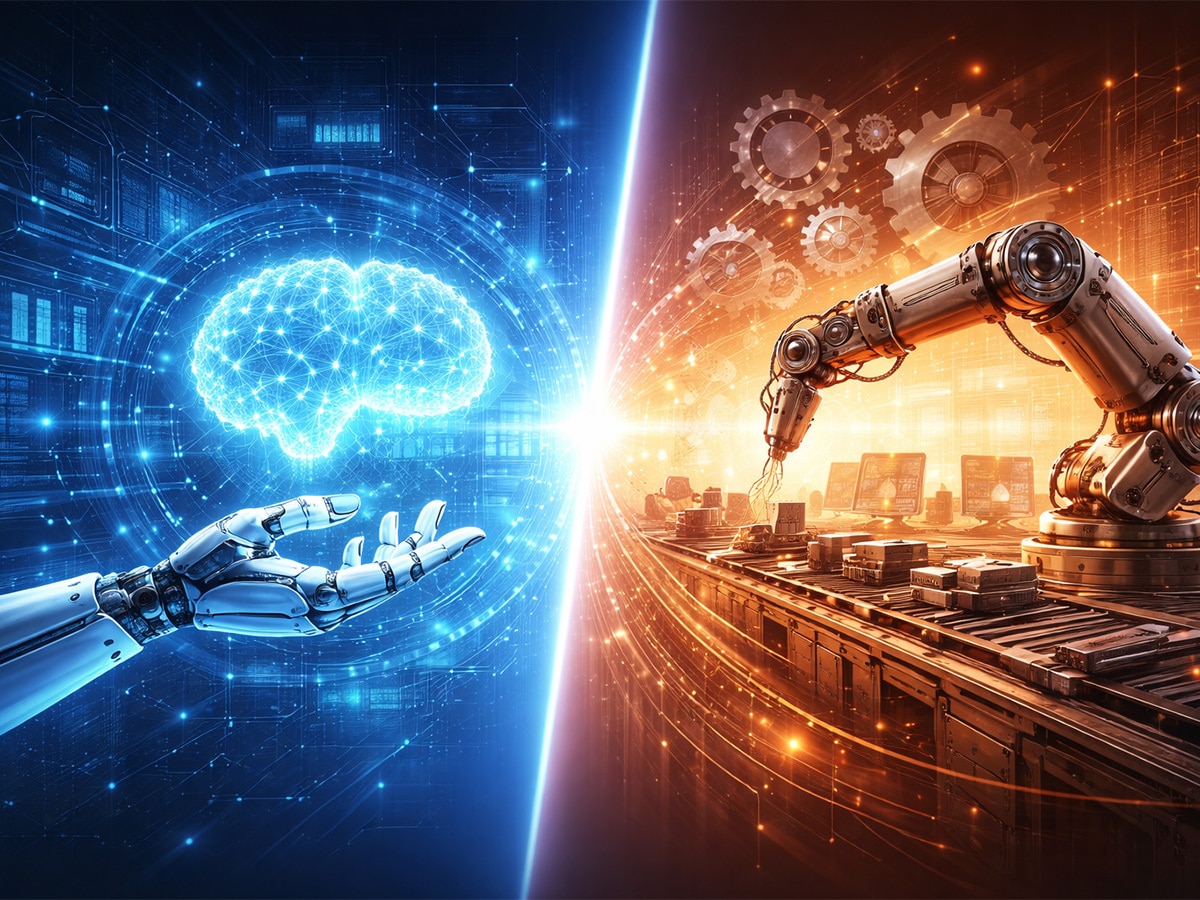
AI Agents vs Traditional Automation: What Businesses Must Know in 2026
-
Jignesh Nakrani
Stop. Just stop doing what everyone else is doing. If your business still runs on old-school automation, spreadsheets, and rigid workflows, you’re already behind. The world isn’t waiting, and neither… Read More

Generative AI in Hospitality: The Ultimate Guide
-
Ankit Patel
The hospitality industry is standing at the edge of its most significant transformation in decades. This shift isn’t driven by a new booking engine, another OTA, or a shiny piece… Read More

AI Adoption in Business: 77% of Companies Are Leading the Way
-
Ankit Patel
Think about your business for a moment. How much time do you spend on repetitive tasks, analyzing endless spreadsheets, or chasing insights that never come fast enough? Imagine if all… Read More


